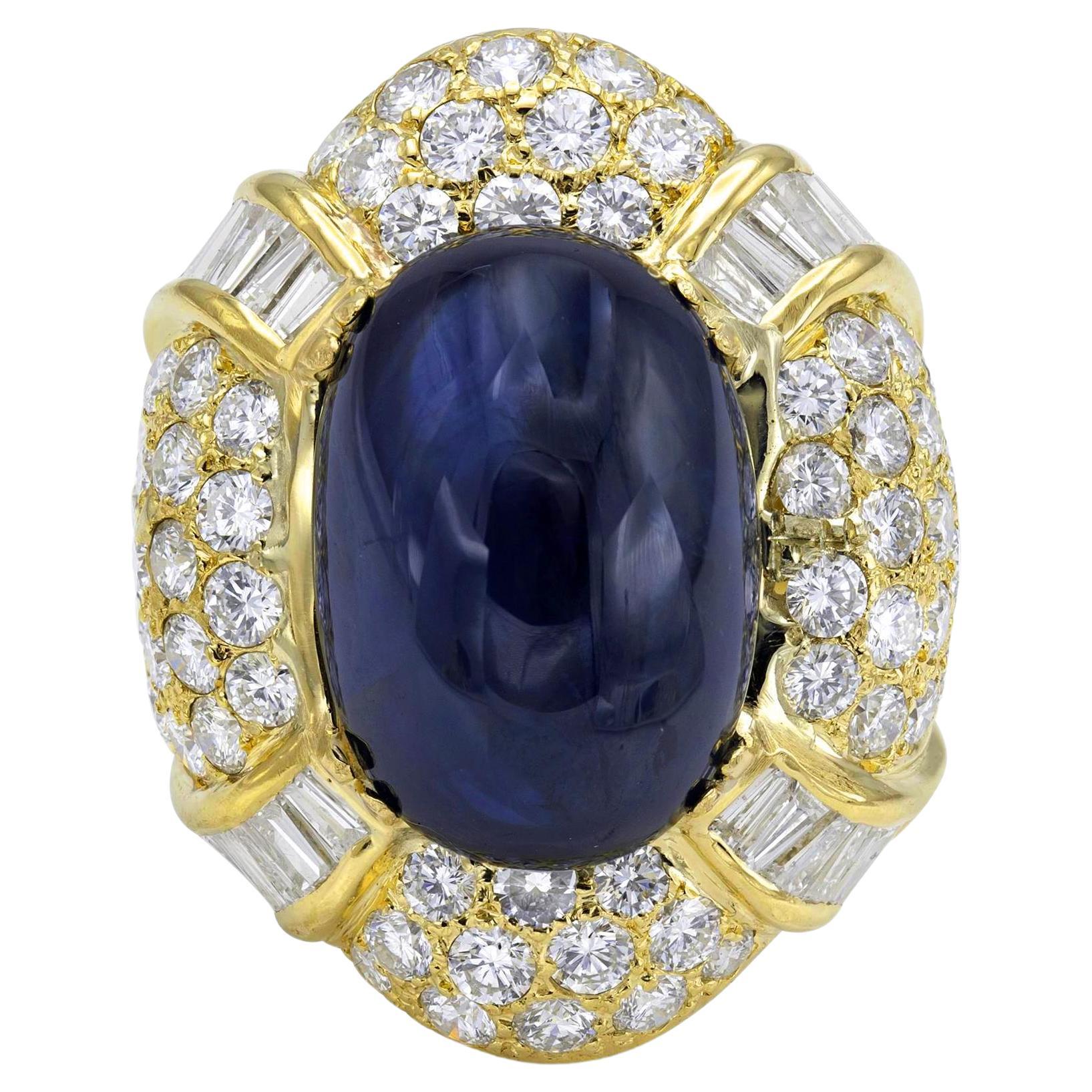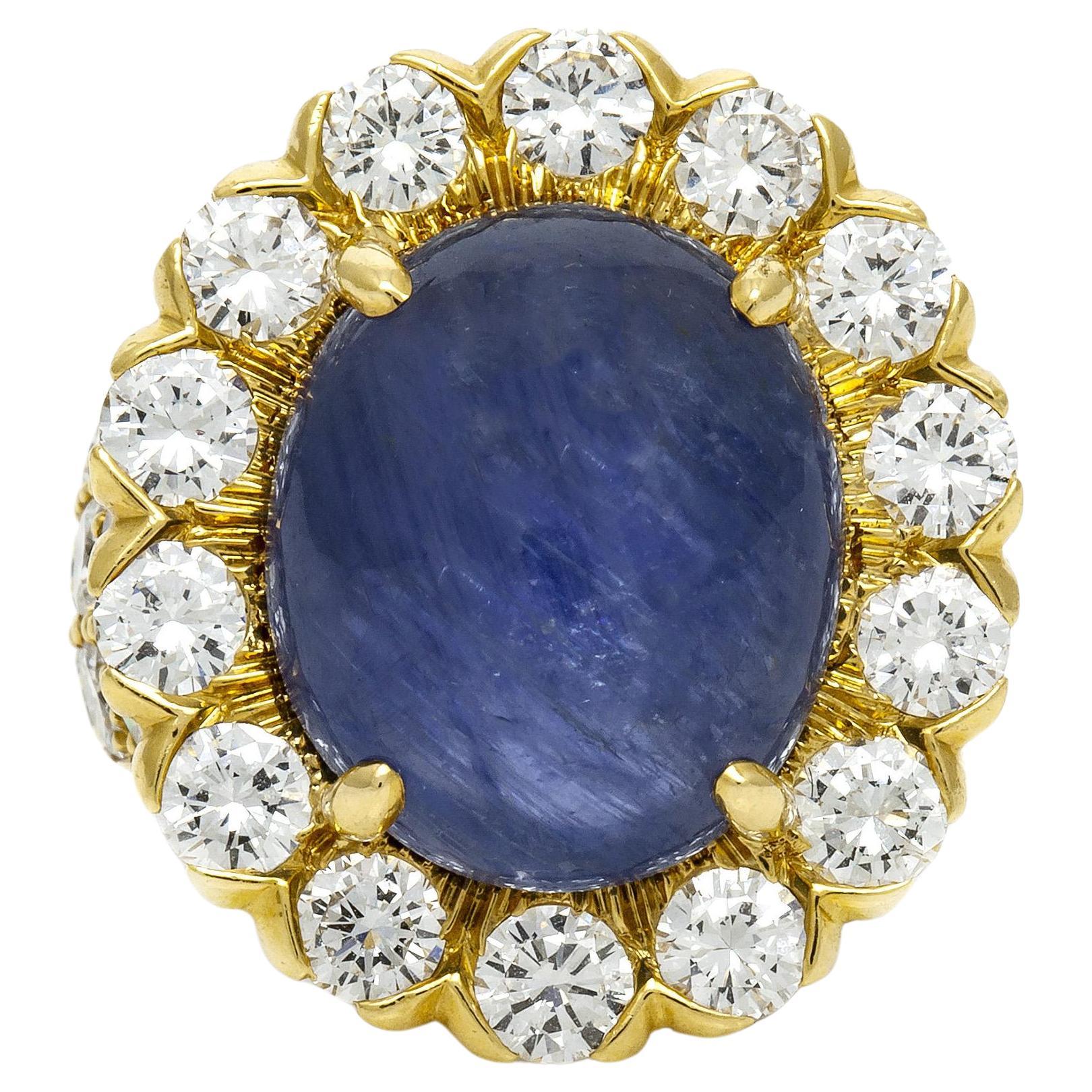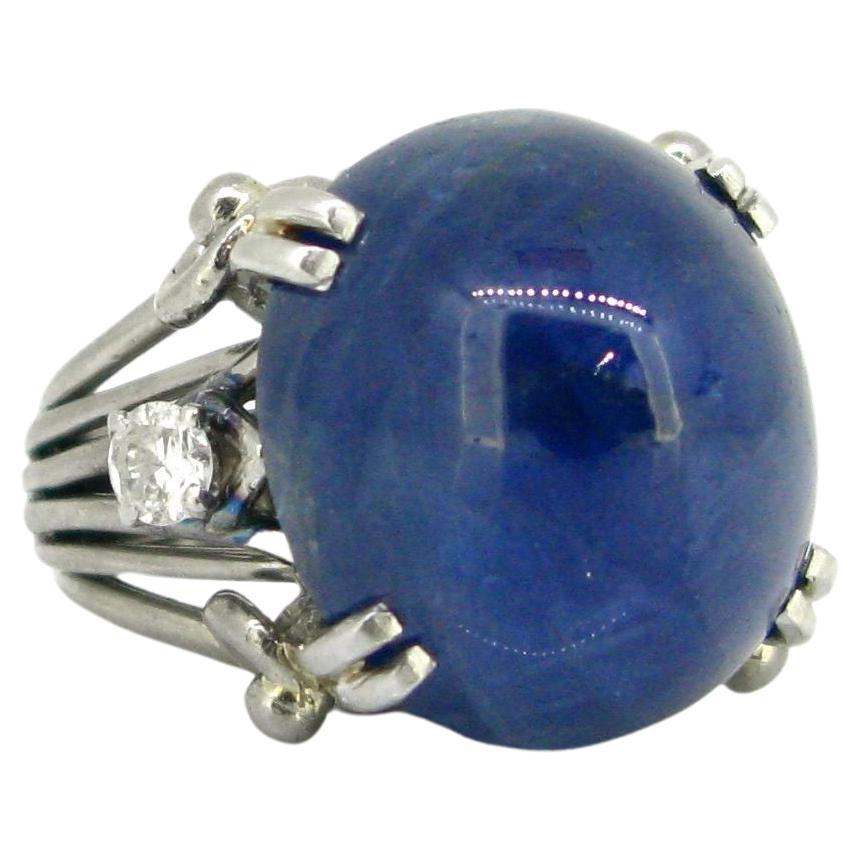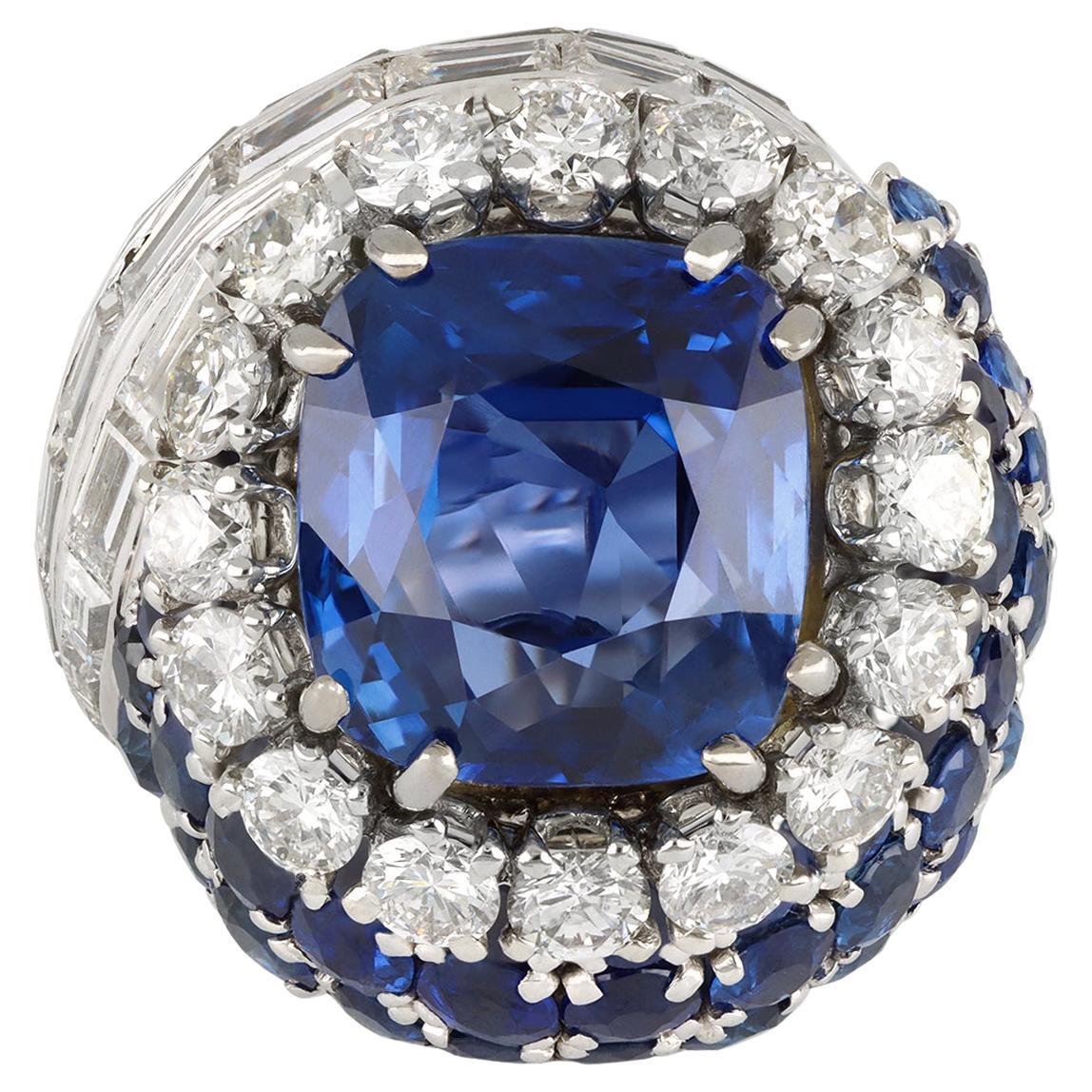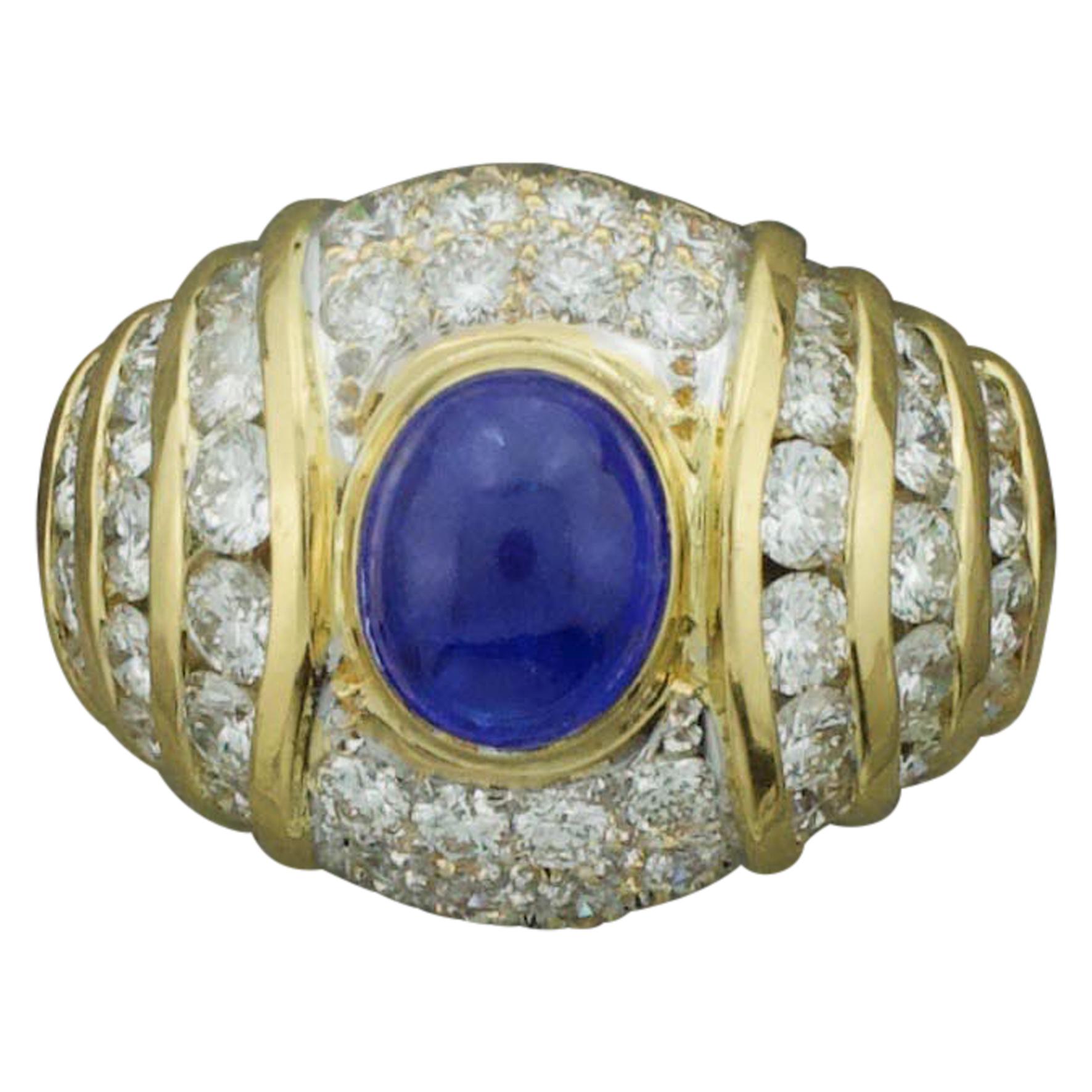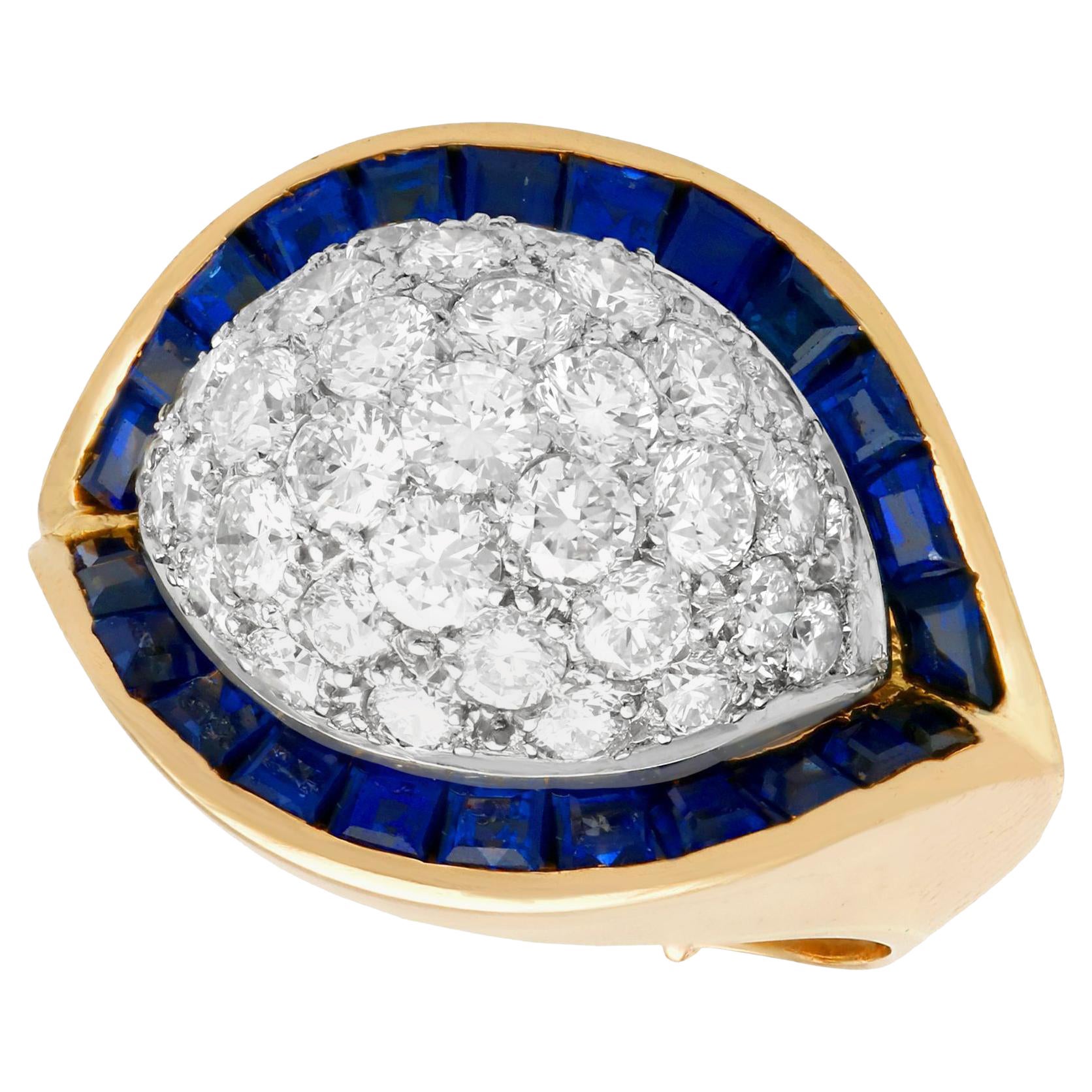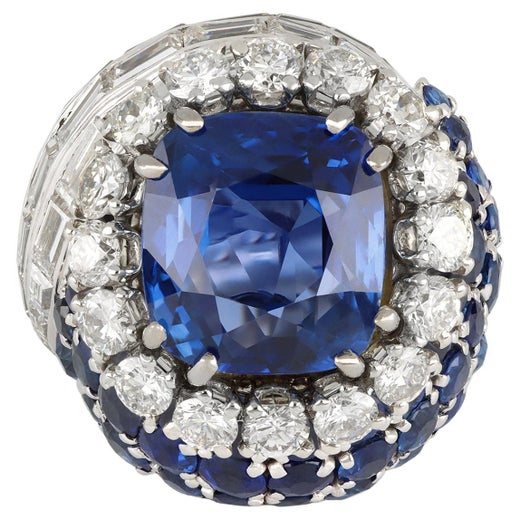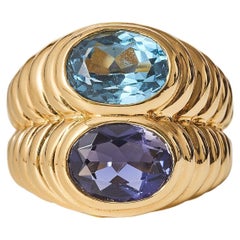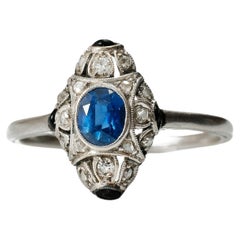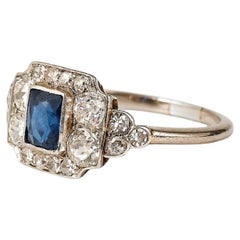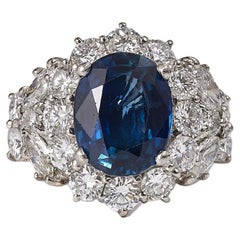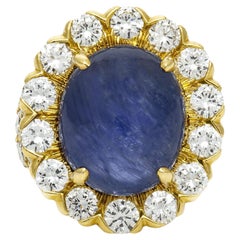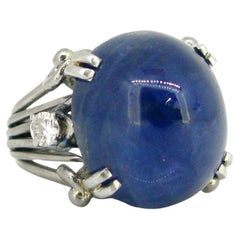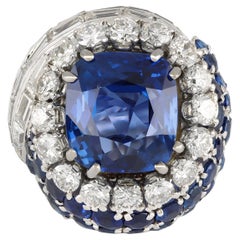17-karätiger Saphirring von Sterlé, um 1960
Angaben zum Objekt
- Schöpfer*in:
- Ringgröße:49.3 mm, größenveränderbar
- Metall:
- Stein:
- Steinschliff:
- Gewicht:17 ct
- Stil:
- Herkunftsort:
- Zeitalter:
- Herstellungsjahr:1960
- Zustand:Abnutzung dem Alter und der Nutzung entsprechend.
- Anbieterstandort:Malmö, SE
- Referenznummer:1stDibs: LU3148226504142
Pierre Sterlé
Der Verlust seines Vaters im Ersten Weltkrieg führte dazu, dass Pierre Sterlévon seinem Onkel betreut wurde, der seinen Aufstieg in die Welt des Schmuckdesigns unterstützte. Auf dem Höhepunkt seines Erfolges entwarf Sterlé für die Titanen des Schmucks Boucheron, Chaumet und Ostertag. Er wurde drei Jahre in Folge mit dem De Beers Diamond Award ausgezeichnet und betrieb eine exklusive Boutique in Paris, in der die Elite und die königlichen Familien nur nach Vereinbarung bedient wurden.
Sein Onkel war ein Pariser Juwelier in der Rue de Castiglione. Im Alter von 29 Jahren eröffnete Sterlé sein eigenes Atelier und entwarf fünf Jahre lang für namhafte Pariser Schmuckhäuser in der Rue Sainte-Anne. Mitte der 1940er Jahre verlegte Sterlé sein Atelier näher an den Place Vendôme, um seine wohlhabenden Kunden besser bedienen zu können, zu denen die französische Schriftstellerin Colette, König Farouk von Ägypten, der Maharani von Baroda und die Begum Aga Khan gehörten.
Sterlé hatte die bemerkenswerte Fähigkeit, "Gold" in gewebte Meisterwerke zu stricken. Sein technisches Können wurde in Paris und wohl auch weltweit von niemandem übertroffen. In seiner "Engelsdraht"-Technik, die als sein Markenzeichen gilt, verarbeitete er Gold zu feinen Seilen, die zu Gliederarmbändern, Cocktailringen und Akzenten auf Schmucknadeln und Broschen wurden. Dieser Effekt verlieh den Stücken ein Gefühl von Bewegung und Leben, etwas, das Sterlé bei seinen Versuchen, Metall und Edelsteine weniger starr und kalt zu machen, anstrebte.
Zwei Unglücksfälle brachten sein Geschäft zum Scheitern. Der erste war ein gescheiterter Versuch, Parfüm herzustellen, was dazu führte, dass er viele seiner Entwürfe an Chaumet und den New Yorker Juwelier Montreaux verkaufen musste. Sterlé erholte sich mit einer erfolgreichen Teilnahme an der Biennale 1966 in Paris, zu der er als erster moderner Juwelier überhaupt eingeladen wurde. Sein zweiter Fehltritt war noch schädlicher. Im Jahr 1969 eröffnete er ein exklusives Geschäft in der Rue Saint-Honoré. Es war nicht erfolgreich, und er war gezwungen, Konkurs anzumelden und verkaufte 1976 den größten Teil seiner Aktien an Chaumet.
Sterlé blieb dem Unternehmen bis zu seinem Tod zwei Jahre später im Jahr 1978 als Berater erhalten.
Auf 1stDibs, finden Sie eine Sammlung von Vintage Pierre Sterlé Ringe, Ohrringe, Armbänder und mehr.
- VersandAngebot wird abgerufen …Versand von: Malmö, Schweden
- Rückgabebedingungen
Mehr von diesem*dieser Anbieter*in
Alle anzeigenVintage, 1980er, Italienisch, Moderne, Moderinge
Iolith, Topas, Blauer Topas, Gold, 18-Karat-Gold, Gelbgold
Vintage, 1920er, Europäisch, Art déco, Cocktailringe
Diamant, Saphir, Platin
Vintage, 1930er, Schwedisch, Art déco, Cocktailringe
Diamant, Saphir, Platin
Vintage, 1980er, Cluster-Ringe
Diamant, Saphir, Platin
Vintage, 1970er, Italienisch, Retro, Moderinge
Koralle, Diamant, Lapis Lazuli, Gold, 18-Karat-Gold, Gelbgold
1990er, Französisch, Moderne, Cocktailringe
Turmalin, Gold, 18-Karat-Gold, Gelbgold
Das könnte Ihnen auch gefallen
Vintage, 1970er, Cocktailringe
Diamant, Saphir, 18-Karat-Gold
Vintage, 1970er, Cocktailringe
Diamant, Saphir, 18-Karat-Gold
Vintage, 1960er, Kuppelringe
Blauer Saphir, 18-Karat-Gold, Platin
Vintage, 1950er, Französisch, Nachkriegszeit, Cocktailringe
Saphir, Platin
Ende des 20. Jahrhunderts, Unbekannt, Moderne, Eheringe
Diamant, Saphir, Gelbgold
Vintage, 1960er, Französisch, Art déco, Cocktailringe
Diamant, Saphir, 18-Karat-Gold, Gelbgold, Gold
